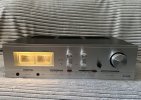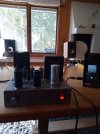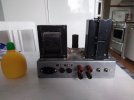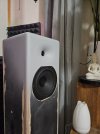DanielT
Master Contributor
You can get Philips speakers in Sweden for almost no money at all.Many speakers of Philips, Kef, Dynaco, Goodman and Warfdale were like that (and there is more).
But they surely don't measure like modern hi tech speakers, and are not worht more in my book. The ones i got were cheap to aquire for me. And for critical systems (studio monitoring, hifi in the sense of neutral low distortion) they don't come close to the modern Genelec's, Neumanns, JBL's or Revel's. But they are very enjoyable to listen to for hours on their own.
I still rate Tannoy and Great Plains Audio (the modern company who sells modern build (relative accurate) Altec drivers clones), but won't buy any of them, as their prices are ridiculous today. But their speakers are still very enjoyable in the old way, the way that made them famous. JBL does it right, and makes to today (ASR) standards great speakers, they don't rely only on the past like those two other brands. They moved with the time and technology and their speakers are worth the prices they go for, even the 17K costing (for a pair) JBL 4367 that is as neutral as the Genelecs and Neumann's of today, certainly if you add dsp room correction. The (50K costing) Tannoy Westminster is not neutral at all. It's oldskool coloured but nice sounding, but certainly not worth the 50K they sell for. 5K for a pair would be more reasonable (for the extensive woodwork, not the sound or the engineeing).
Whether the Philips 587 was an exception among Philips speakers and that they have an even FR, I don't know, but anyway here they are:

Here are windowed measurements of both after the repairs and adjustments, perfect linearity better than +-2 dB and superb matching better than 0,5 dB:
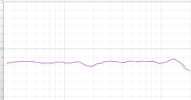
Even their directivity isn't too shabby thanks to the small mid and high domes with even some kind of waveguide:
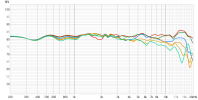
It was thewas speakers that he brings up in #145 of this thread:

Measuring Some Vintage Speakers
Cool! I'll start with JBL L19, so the home variant of the 4301. I meassured them outside on my terrace with a calibrated behringer ecm8000. Unfortunately i dont have the original meassurements anymore so i cant scale them to a 50db range. First Horizontal plots. 0-90° Green is 180° behind the...
 audiosciencereview.com
audiosciencereview.com
_______
Wafoe's Philips 22AH487. I think their looks are appealing.
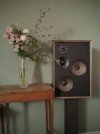
I hope Wafoe gave up on the bad idea of changing the bass driver in them to make them go down lower in frequency. The solution is of course to add a subwoofer, which was pointed out in the thread:

Seeking advice on Extending Low-Frequency Response in 70's speakers
I recently acquired a pair of Philips 22AH487 speakers from the 70s, and I'm absolutely in love with their vintage aesthetic. However, I'd like to give them a modern upgrade while keeping their original look. While they sound decent overall, the bass response is disappointing, especially...
 audiosciencereview.com
audiosciencereview.com
